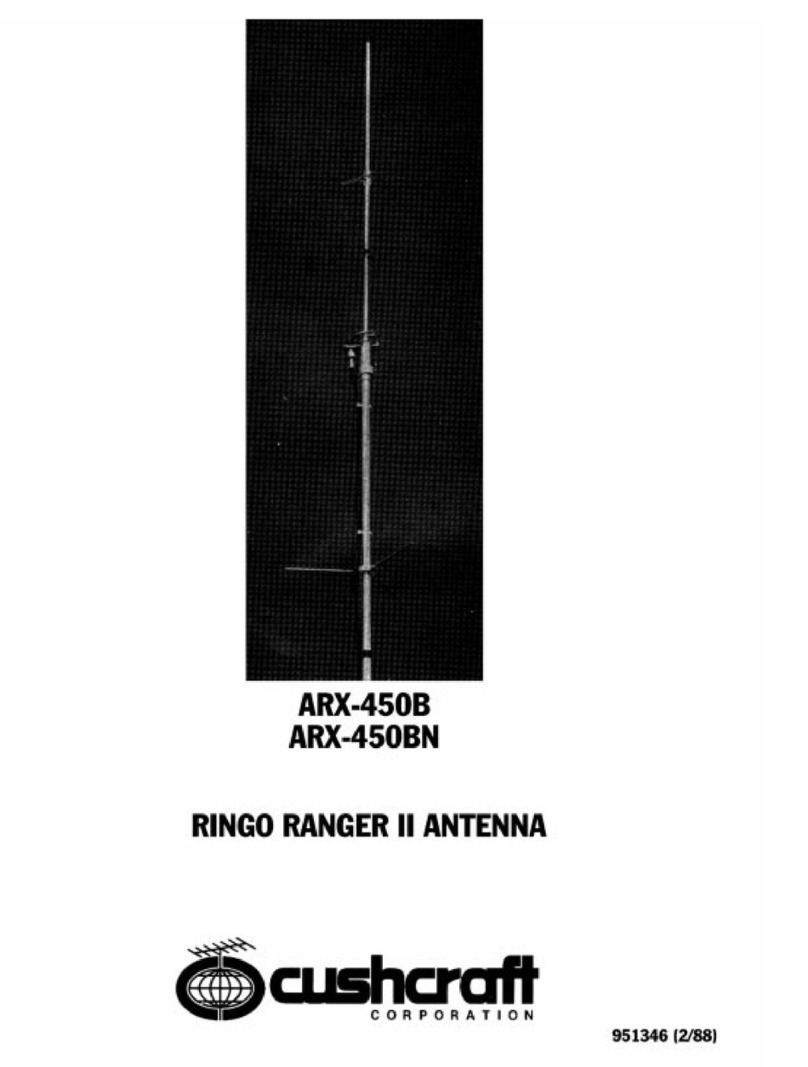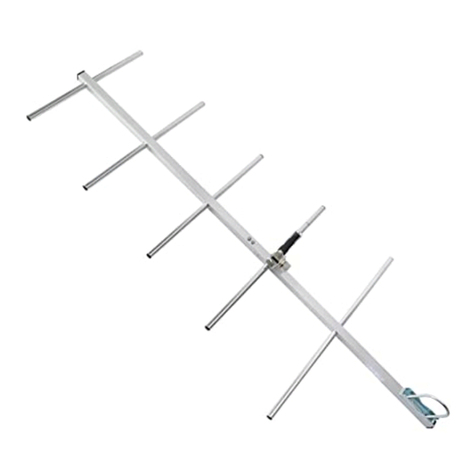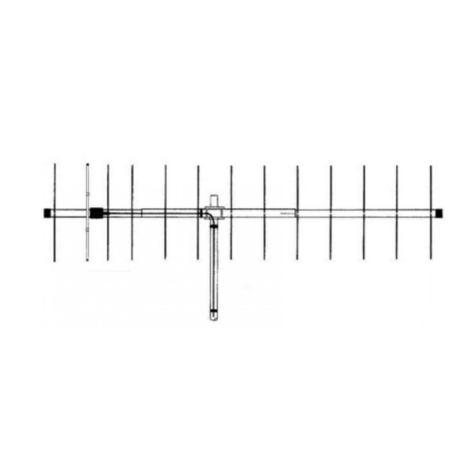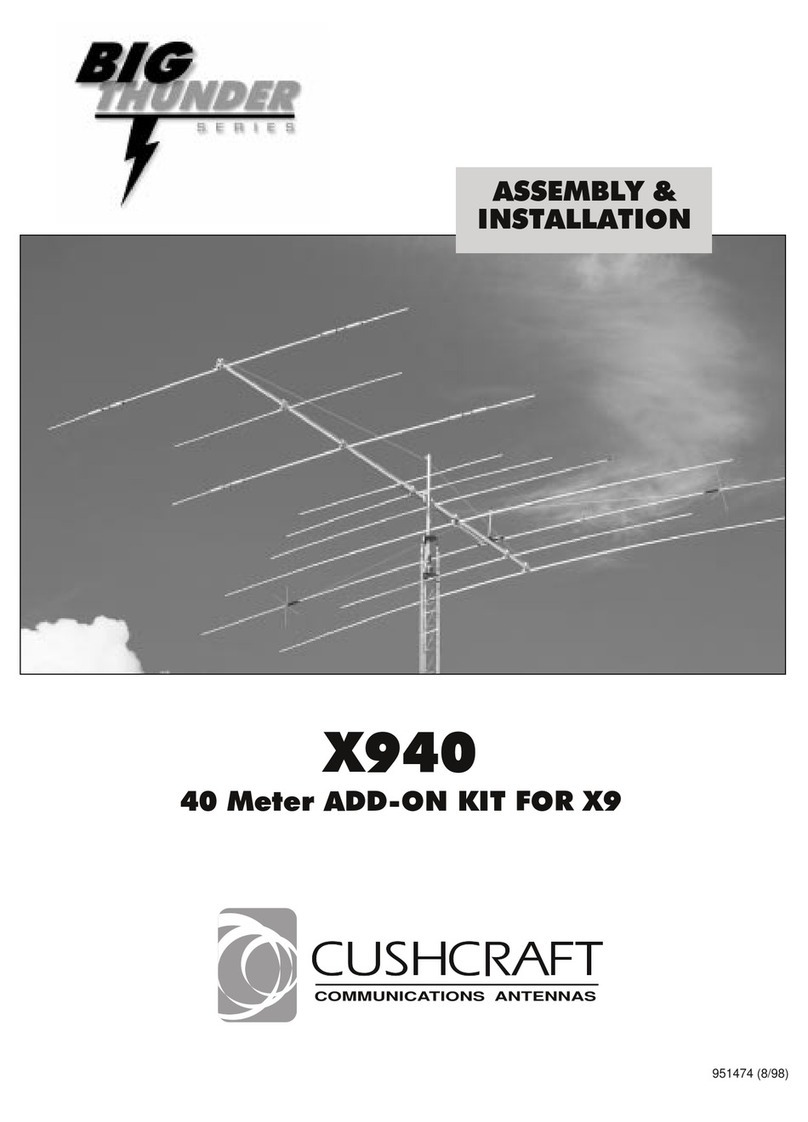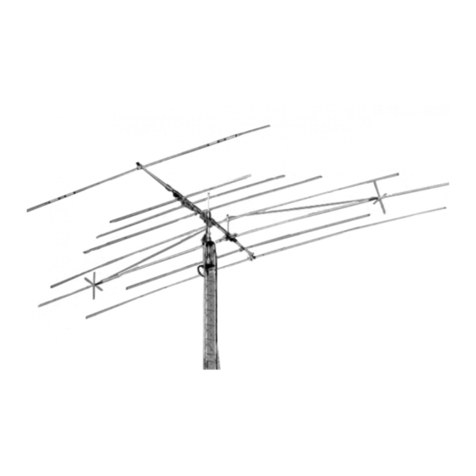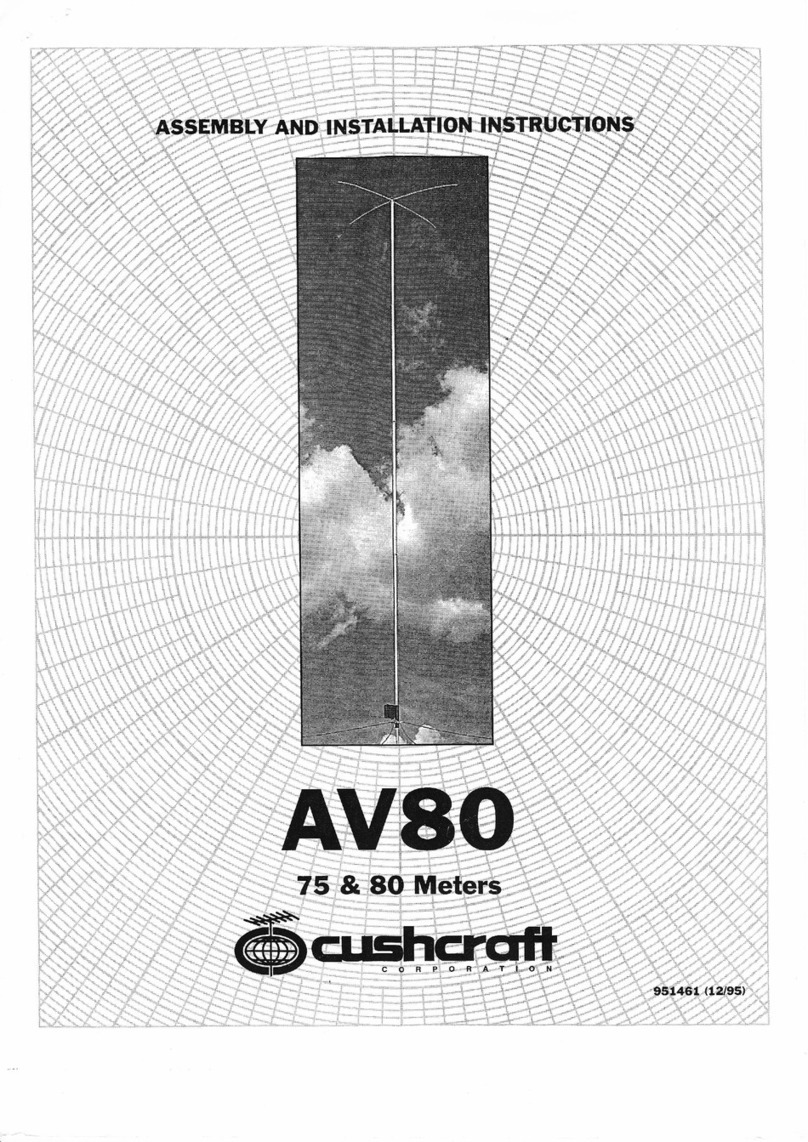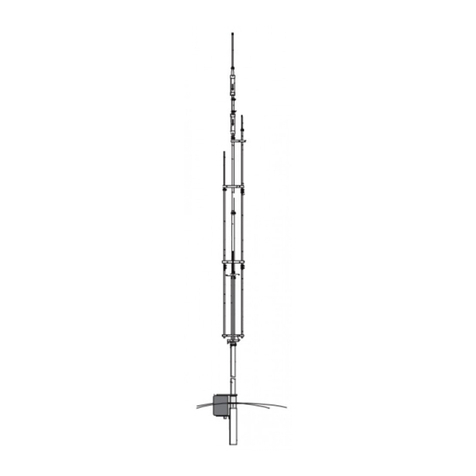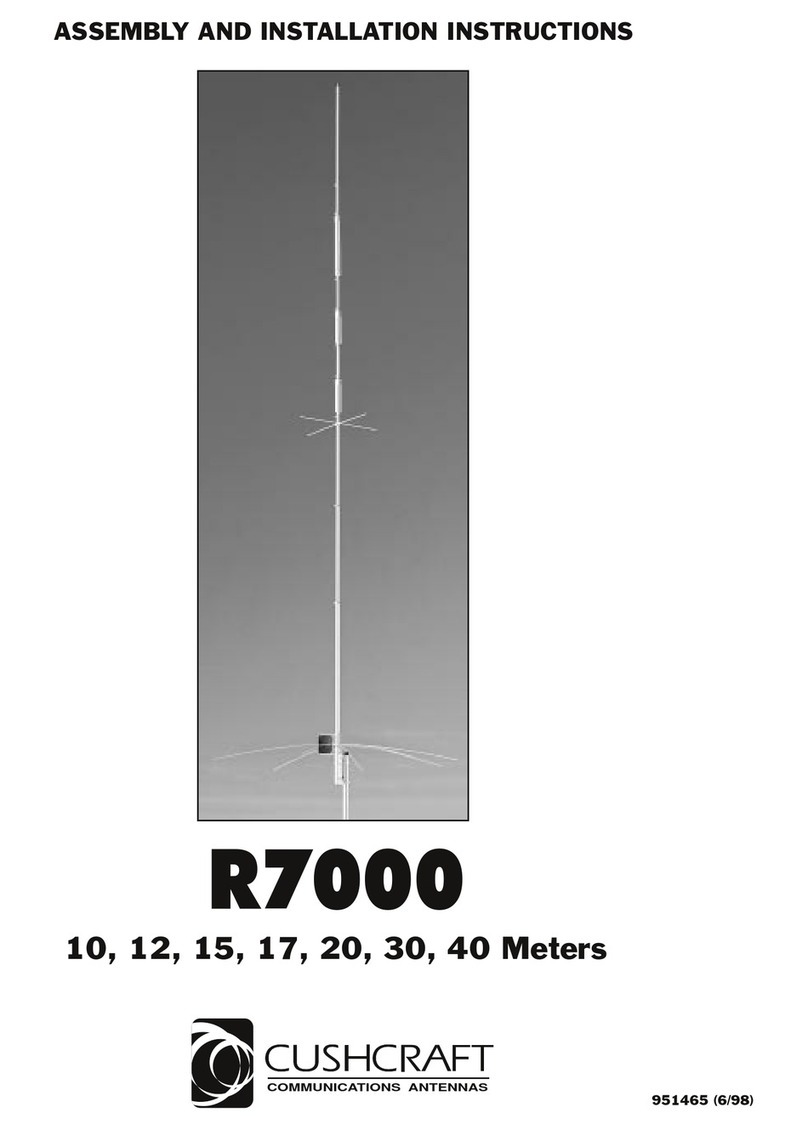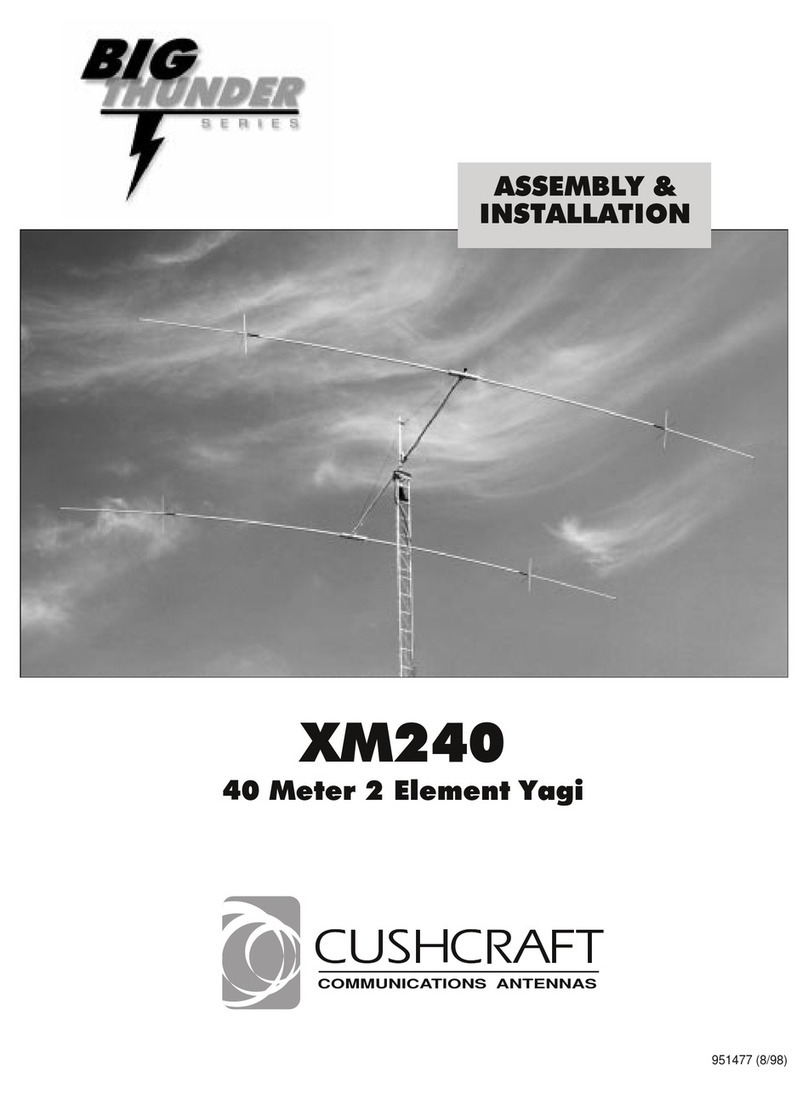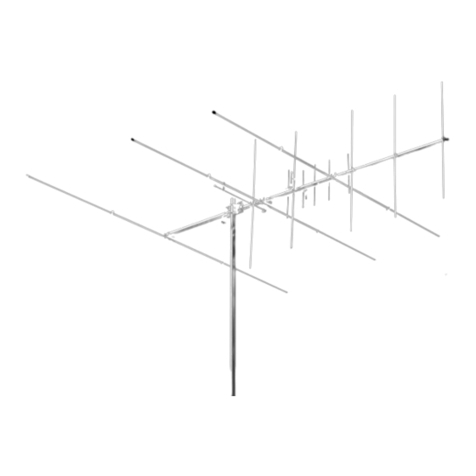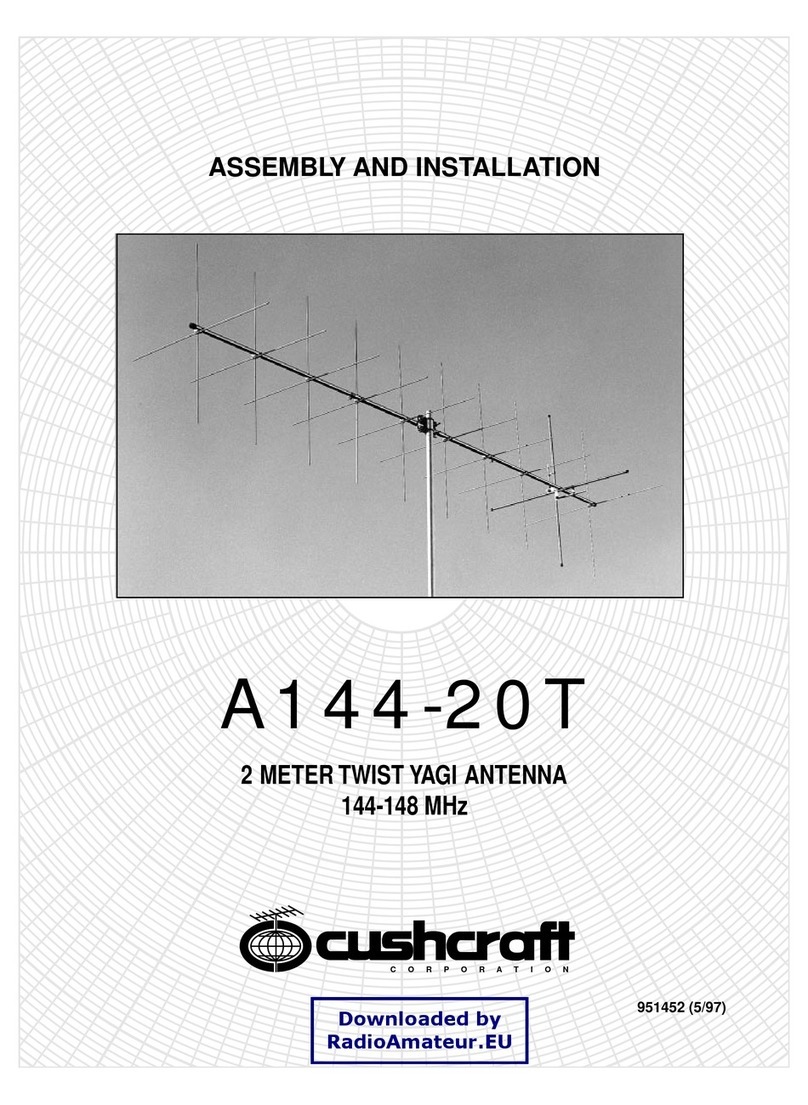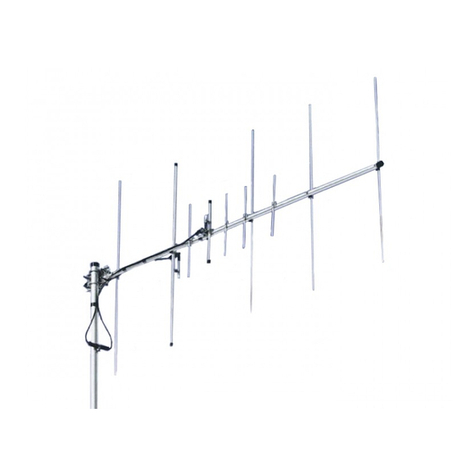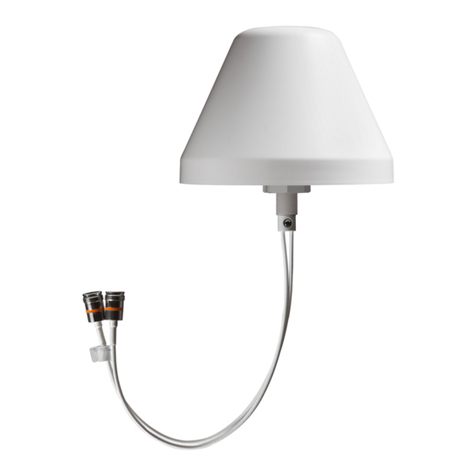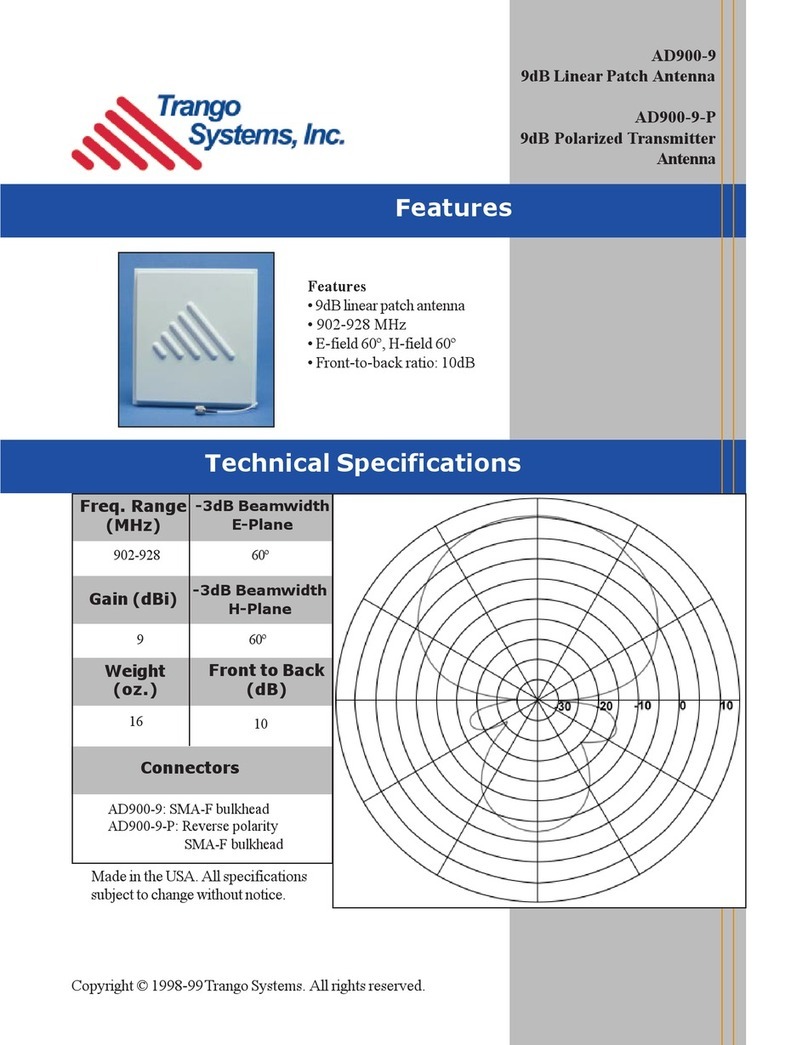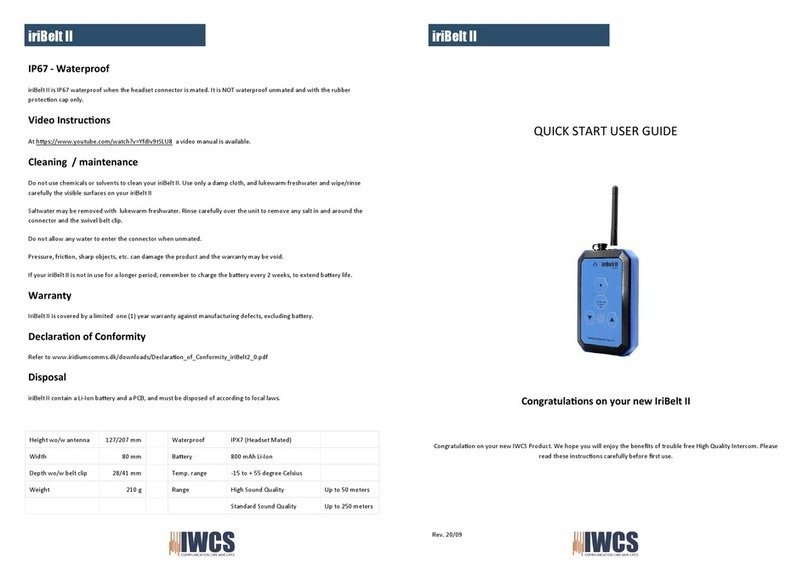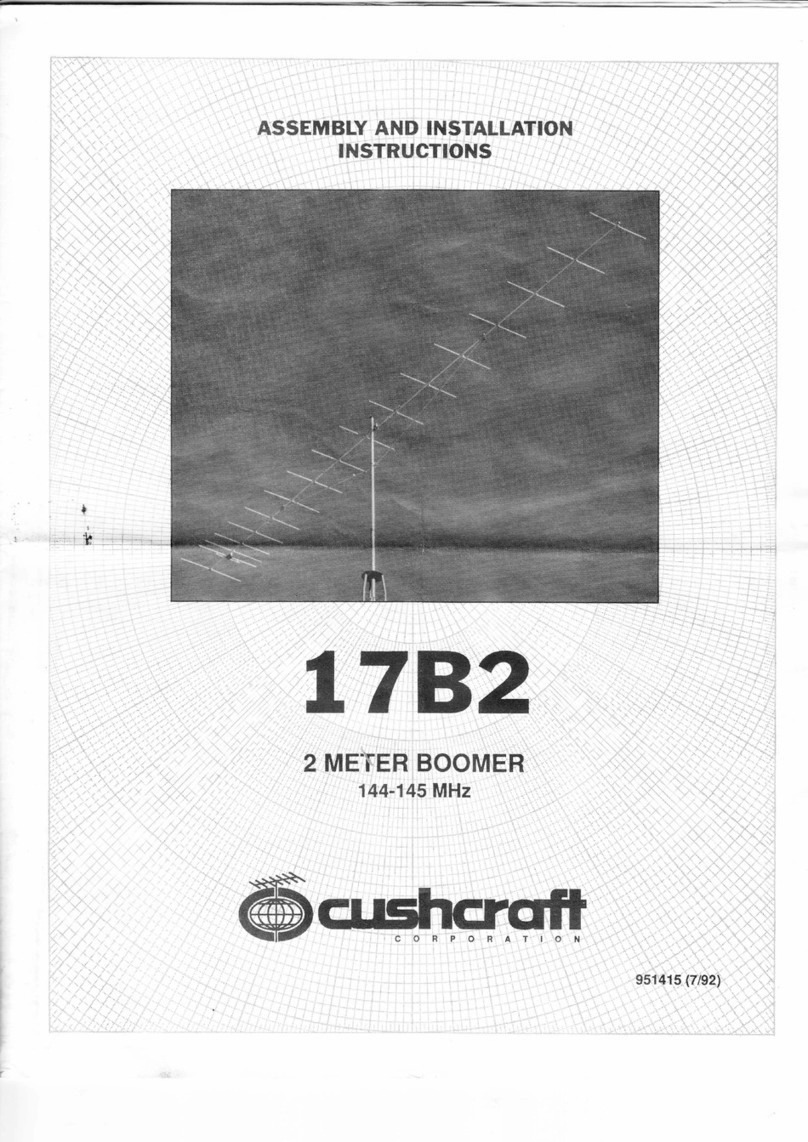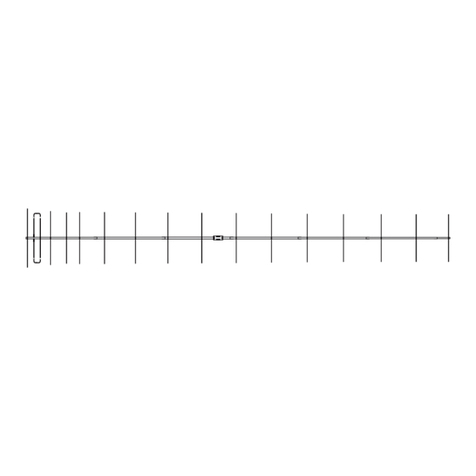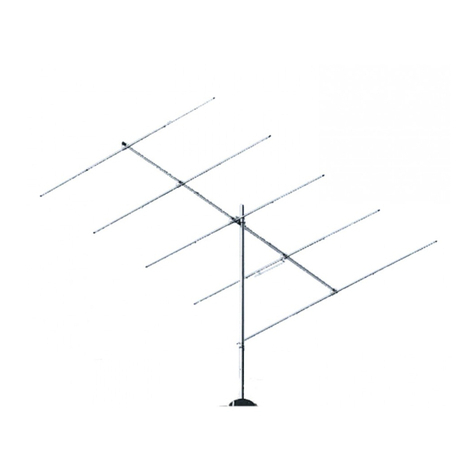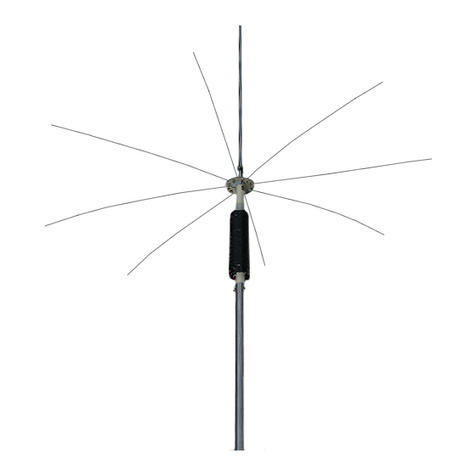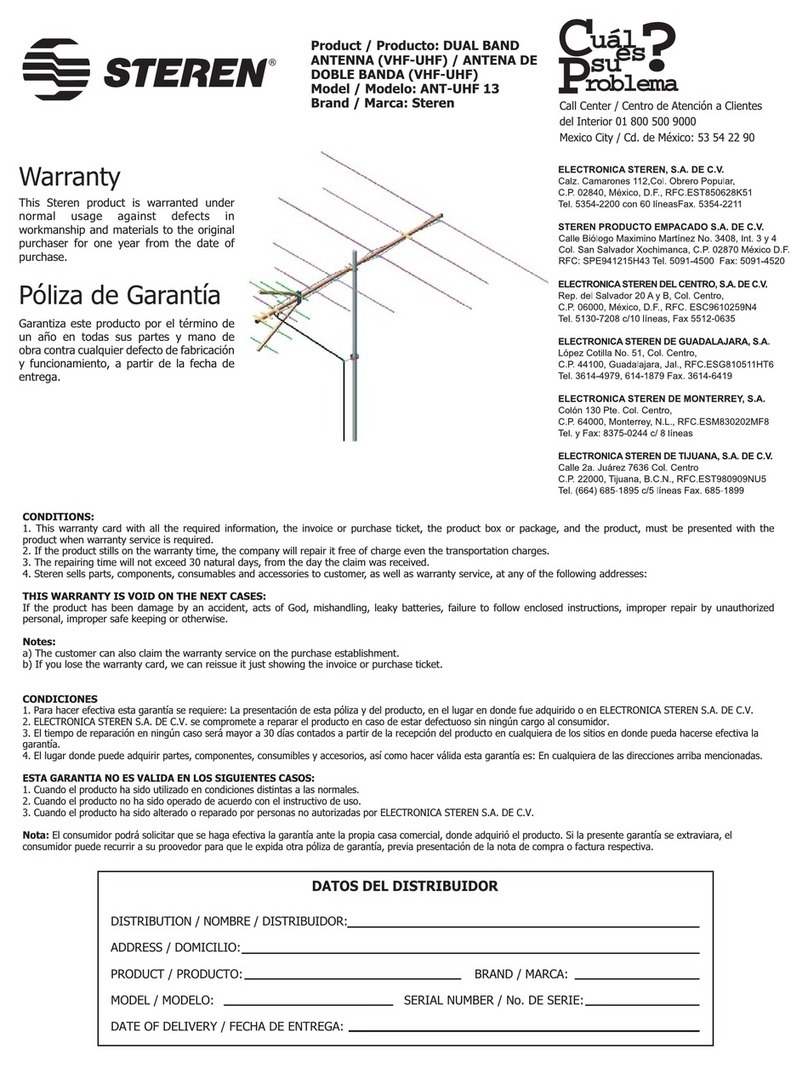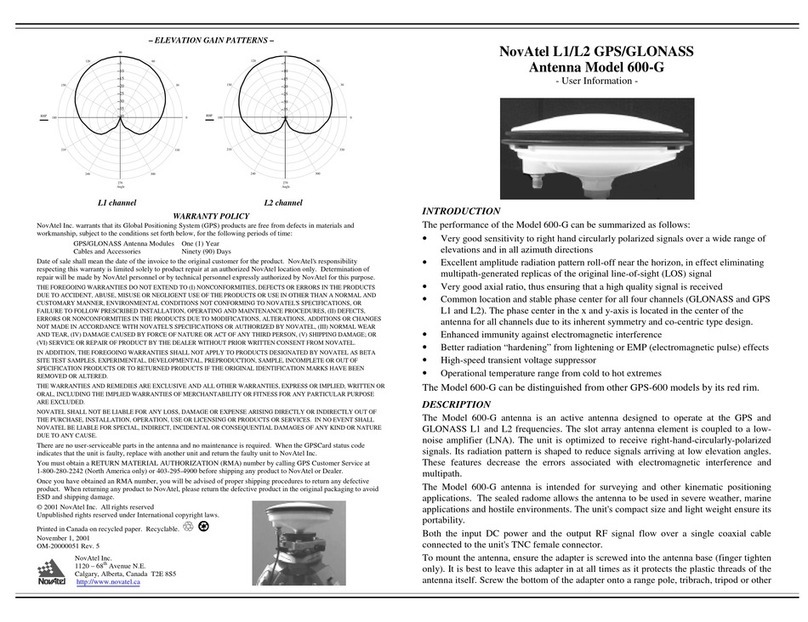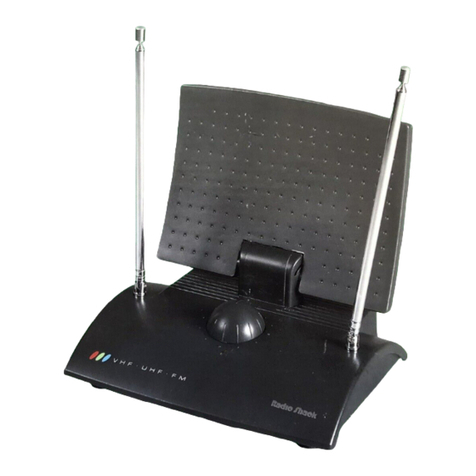
A144-11
WARNING
THIS ANTENNA IS AN ELECTRICAL CONDUCTOR. CONTACT WITH POWER LINES CAN RESULT IN DEATH, OR SERIOUS INJURY.
DO NOT INSTALL THIS ANTENNA WHERE THERE IS ANY POSSIBILITY OF CONTACT WITH OR HIGH VOLTAGE ARC-OVER FROM
POWERCABLESORSERVICEDROPSTOBUILDINGS. THEANTENNA,SUPPORTINGMASTAND/ORTOWERMUSTNOTBECLOSE
TO ANY POWER LINES DURING INSTALLATION, REMOVAL OR IN THE EVENT PART OF THE SYSTEM SHOULD ACCIDENTALLY
FALL. FOLLOW THE GUIDELINES FOR ANTENNA INSTALLATIONS RECOMMENDED BY THE U.S. CONSUMER PRODUCT SAFETY
COMMISSION AND LISTED IN THE ENCLOSED PAMPHLET.
YourCushcraftVHFantennaisdesignedandmanufacturedtogivetopperformanceandtroublefreeservice. Theantennawillperformasspecified
if the instructions and suggestions are followed and care is used in assembly and installation. When checking the components received in your
antenna package use the parts lists in each section. It is easiest to identify the various dimensions of tubing by separating them into groups of
the same diameter and length. If you are unable to locate any tube or component, check the inside of all tubing.
IMPORTANT: save the weight
label from the outside of the carton. Each antenna is weighed at the factory to verify the parts count. If you claim a missing part, you will be asked
for the weight verification label.
There is a master parts list on page 2.
LOCATION
Locationofthe antenna is very important. Surroundingobjectssuch as trees, power lines,otherantennas, etc. will seriously reduceefficiency. To
minimize the effects of surrounding objects, mount the antenna as high and in the clear as possible. If metal guy wires are used, they should be
broken with strain insulators. YOU MUST INSURE THAT NEITHER PEOPLE NOR PETS CAN COME IN CONTACT WITH YOUR ANTENNA
WHILEITISINOPERATION. DEADLYVOLTAGESANDCURRENTSMAYEXIST. ALSO,SINCETHEEFFECTSOFEXPOSURETORFARE
NOTFULLYUNDERSTOOD,LONGTERMEXPOSURETOINTENSERFFIELDSISNOTRECOMMENDED. THEREISAWARNINGSTICKER
WHICH MUST BE ATTACHED TO THE BOOM AS SHOWN IN FIGURE E.
Plan your installation carefully. If you use volunteer helpers be sure that they are qualified to assist you. Make certain that everyone involved
understands that you are in charge and that they must follow your instructions. If you have any doubts at all employ a professional antenna
installation company to install your antenna.
MOUNTING
The A144-11 mast mount bracket will take up to a 1-1/2" (3.8 cm) O.D. mast. A 1-1/4" (3.17 cm) television type tubing is satisfactory for any of the
single
beams. A good heavy-duty antenna rotator will provide the best service and longest life. Often it is desirable to mount several antennas
on one mast. To keep possible interaction to minimum, place your antennas as far apart as you can. Mount the A144-11 with the
Reddi-Match
rods pointing up.
Keep the mast mount bracket on the opposite side of the boom from the elements. This will help to minimize pattern distortion
from the mast. See page 5 for suggested dual and quad array configurations.
SYSTEM GROUNDING
Direct grounding of the antenna, mast and tower is very important. This serves as protection from lightning strikes, static buildup and high voltage
which is present in the radio equipment connected to the antenna. A good electrical connection should be made to one or more ground rods (or
other extensive ground system) directly at the base of the tower or mast, using at least #10AWG ground wire and non-corrosive hardware. For
detailsandsafetystandards,consulttheNationalElectricalCode. Youshouldalsouseacoaxiallightningarrester. Cushcraftoffersseveraldifferent
models, such as LAC-1, LAC-2 and the LAC-4 series.
ASSEMBLY
Assemble your antenna by following the directions and illustrations in steps 1 through 5. After the antenna is completely assembled, verify
dimensions and element spacings for accuracy. Then, return to the section below for final tuning.
TUNING PROCEDURE
The A144-11 does not normally require tuning after assembly. However, if you wish to check the VSWR before installation, please observe the
followingprocedures. Topreventdetuning the antenna, it should betunedinplaceor at least 7 feet (2.1m)abovegroundandclearof surrounding
objects. Keep all metal obstructions such as guy wires and other antennas at least 7 feet (2.1 m) away since they will nullify any adjustment and
degraded performance will result.
Runthecoaxcablefromyourtransmittertotheareainwhichtheantennaisgoingtobetested. Thelengthofthiscableoryourfeedlineisnotcritical.
Connect a good quality VSWR bridge to the end of this cable. Connect a short length of cable [10 ft (3 m) or less] from the VSWR bridge to the
antenna. Set the transmitter to your center operating frequency. When you read VSWR, be sure you move far enough away from the antenna
so that your body does not effect the reading.
MeasuretheVSWR. If it is high, move the tuning strap by 1/4" (.6 cm) in one direction and check theVSWR. If the VSWR improves,thencontinue
movingthetuningstrapinthesamedirection. Ifthe VSWRdeterioratesthenmovethetuningstrapintheoppositedirection. Repeatthisprocedure
until no further improvement can be made. You have matched your antenna to 50 Ohms. Tighten all connections making sure to keep the Reddi-
Match assembly parallel to the element (EB) above. Tape the feedline to the boom and mast (figure G).
1

